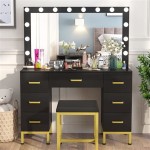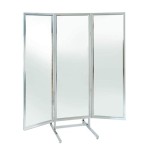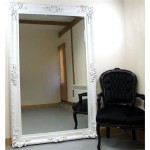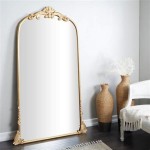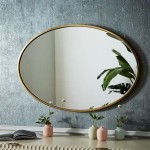Mirrors for Corners: Enhancing Safety and Aesthetics in Interior Design
Mirrors, long utilized for their reflective properties, extend beyond mere vanity tools. Their application in interior design offers a multifaceted approach, enhancing spatial perception, improving safety, and contributing to overall aesthetic appeal. A specific application, the strategic placement of mirrors at corners, presents a particularly effective method for achieving these goals. This article delves into the benefits, considerations, and practical applications of using mirrors in corners to optimize interior spaces.
Enhancing Visibility and Safety
One of the primary benefits of incorporating mirrors into corners is the significant improvement in visibility and safety. In areas with limited sightlines, such as hallways, blind corners in garages, or tight intersections in retail spaces, mirrors can act as a visual aid, alerting individuals to potential hazards or oncoming traffic. This is particularly crucial in environments where pedestrian and vehicular traffic intersect, where obscured views can lead to accidents.
The reflective surface provides a wider field of vision than would otherwise be available. Imagine a hallway where two corridors meet at a sharp angle. Without a mirror, individuals approaching the corner are unable to see what lies beyond until they reach the intersection. This presents a risk of collision, especially in busy environments. By placing a mirror strategically at the corner, individuals gain a glimpse of the approaching traffic, allowing them to react accordingly and avoid potential accidents. This is especially important in settings catering to individuals with mobility challenges or visual impairments.
Furthermore, in retail environments, corner mirrors can deter shoplifting by increasing the apparent surveillance of the area. Potential offenders are less likely to engage in illicit activities if they perceive that they are under observation. The mirror acts as a psychological deterrent, creating the illusion of expanded security coverage, even if the actual security presence remains unchanged.
Specialized convex mirrors, often employed in industrial settings or warehouses, are designed to maximize the field of view. These mirrors, curved outward, reflect a wider panorama than a traditional flat mirror, providing a more comprehensive view of the surrounding area. This feature is particularly beneficial in areas with high forklift traffic or complex layouts, where clear visibility is paramount to preventing accidents and ensuring the safe movement of personnel and materials.
The size and placement of the mirror are critical factors in optimizing its effectiveness. A larger mirror provides a greater field of view, but it must be positioned in a way that does not obstruct passage or create unnecessary glare. The angle of the mirror should be adjusted to provide the best possible view of the approaching traffic or potential hazards. Careful consideration of these factors is essential to ensure that the mirror effectively enhances safety without creating additional risks.
Creating the Illusion of Space and Light
Beyond their safety benefits, mirrors strategically placed in corners contribute significantly to the perceived size and brightness of interior spaces. Mirrors cleverly manipulate the viewer's perception of depth and dimension, making small or confined areas feel more spacious and airy. This is particularly useful in apartments, hallways, or other areas where maximizing the feeling of openness is desired.
When a mirror is positioned in a corner, it reflects the adjacent walls, effectively doubling the visual space. This creates an illusion of continuity, blurring the boundaries of the room and making it feel larger than its actual dimensions. The reflection of light further amplifies this effect, brightening the space and creating a more inviting atmosphere. Natural light, in particular, can be harnessed by strategically angling the mirror to reflect sunlight into the room, reducing the need for artificial lighting and saving energy.
The type of mirror used can also influence the overall aesthetic effect. A full-length mirror, for example, can create a dramatic impact, making a small room feel significantly larger. Beveled mirrors, with their angled edges, add a touch of elegance and sophistication, while antique mirrors, with their aged and distressed surfaces, can create a sense of history and character. The choice of mirror should be carefully considered to complement the existing decor and achieve the desired aesthetic effect.
The surrounding decor also plays a crucial role in enhancing the illusion of space. Light-colored walls and flooring, combined with minimal clutter, can further amplify the effect of the mirror. Dark or heavily patterned walls, on the other hand, can detract from the illusion of spaciousness. By carefully coordinating the mirror with the surrounding decor, it is possible to create a truly transformative effect, making even the smallest rooms feel more open and inviting.
Consider the architectural features of the room when planning the placement of corner mirrors. Reflecting an interesting architectural detail, such as a window or a piece of artwork, can draw attention to that feature and enhance its impact. Conversely, reflecting an unattractive feature, such as a utility closet or a poorly lit corner, should be avoided. The goal is to use the mirror to highlight the positive aspects of the space and minimize the negative ones.
Aesthetic Considerations and Design Integration
While functionality is a primary consideration, the aesthetic integration of corner mirrors is equally important. The mirror should not only serve its practical purpose but also complement the overall design scheme of the space. The choice of frame, shape, and style of the mirror should be carefully considered to ensure that it harmonizes with the existing decor and enhances the overall aesthetic appeal.
The framing of the mirror can significantly impact its visual effect. A simple, minimalist frame can blend seamlessly into the background, allowing the reflective surface to take center stage. A more ornate frame, on the other hand, can add a touch of elegance and sophistication. The choice of frame should be guided by the overall style of the room and the desired aesthetic effect. For example, a rustic wooden frame might be appropriate for a country-style interior, while a sleek metal frame might be better suited for a modern design.
The shape of the mirror is another important consideration. While rectangular mirrors are the most common, other shapes, such as round, oval, or even custom-designed shapes, can add a unique touch to the space. A round mirror, for example, can soften the sharp angles of a room and create a more inviting atmosphere. A custom-designed mirror can be tailored to fit the specific dimensions of the corner and complement the architectural features of the space. The shape of the mirror should be chosen based on the desired aesthetic effect and the overall design scheme of the room.
Lighting plays a crucial role in enhancing the aesthetic impact of a corner mirror. A well-lit mirror can reflect light and create a brighter, more inviting space. Conversely, a poorly lit mirror can appear dull and lifeless. Consider installing accent lighting around the mirror to highlight its features and create a more dramatic effect. Sconces, spotlights, or even LED strip lights can be used to illuminate the mirror and enhance its visual appeal.
The surrounding decor should also be carefully considered when integrating a corner mirror into the design scheme. Placing decorative objects, such as vases, plants, or artwork, near the mirror can enhance its visual appeal and create a more inviting atmosphere. However, avoid cluttering the area around the mirror, as this can detract from its effect and make the space feel smaller. The key is to strike a balance between adding visual interest and maintaining a sense of spaciousness and order.
Mirrors intended for safety purposes, such as in garages or industrial settings, often prioritize functionality over aesthetics. However, even in these environments, there are opportunities to incorporate elements of design that enhance the overall appearance of the space. For example, choosing a mirror with a clean, modern frame or incorporating it into a visually appealing mounting system can improve the overall aesthetic without compromising its safety function.

Mirror By Kaschkasch Cologne For Menu Slots Into Corners

Mirredge 3 In X Acrylic Mirror Corner Plates 4 Pack 32504 The Home Depot

22 In W X 30 H Matte Black Metal Framed Rounded Corner Rectangular Wall Mirror Z W132752910 The Home Depot

Metal Framed Round Corner Wall Mirror 16x24

Beautypeak 64 X21 Full Length Standing Arch Top Floor Mirror With Safe Corners Gold Com

Pexfix 32 In W X 71 H Aluminium Alloy Deep Modern Arch Framed Full Length Mirror With Rounded Corner Black Us Mr01144 The Home Depot

12in Wide Angle Convex Mirrors Corner Blind Spot Outdoor Driveway Traffic Mirror Com

Convex Driving Safety Mirrors For Blind Corners Great American Property

Melodieux Aluminum Alloy Frame Full Length Floor Mirror Modern Safe Design

22 In W X 65 H Rounded Corners Rectangular Wood Framed Wall Mount Or Floor Standing Modern Bathroom Vanity Mirror 2024 7 10 The Home Depot
